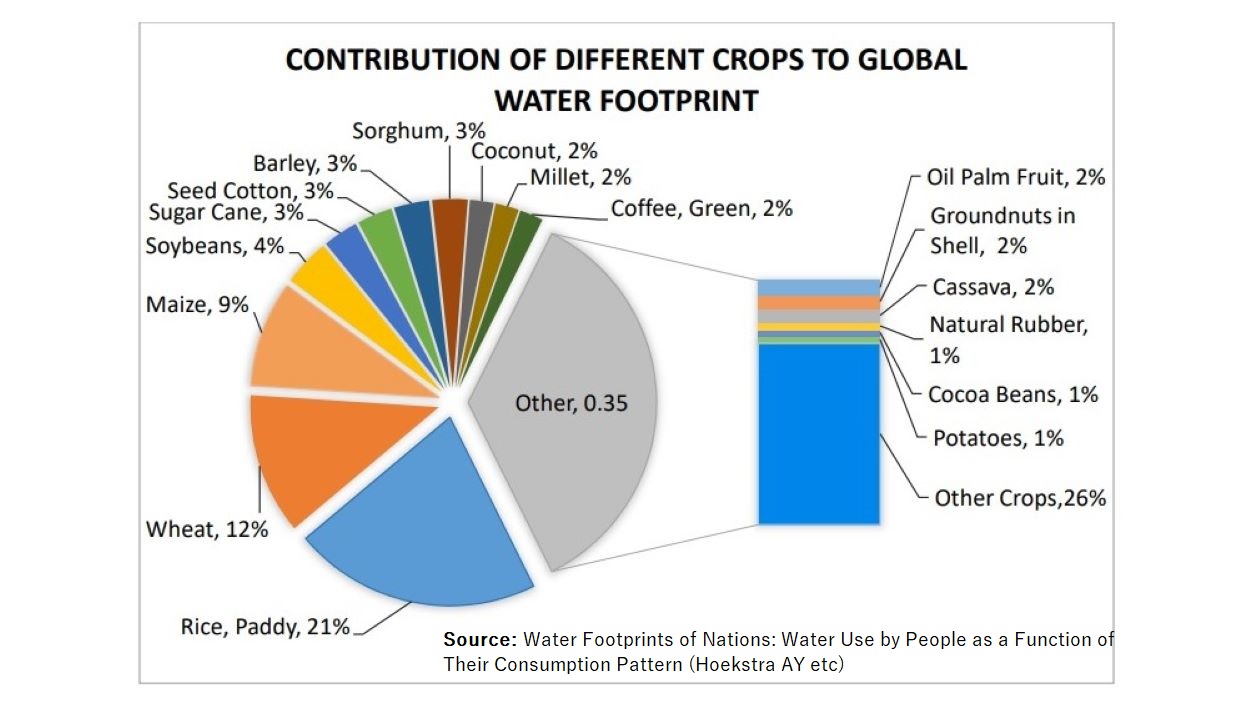
Is Cotton Really Tainted?
Yet another
report has been released that demonises the cotton industry. The report by
Earthsight is a new Aral Sea. Cotton is blamed for environmental destruction
associated with national development plans, and the clear message to retailers
is that they should source polyester.
The Earthsight
report contains factual errors and distortions related to water and pesticide
use in cotton production. It makes you wonder what other errors they might be
making.
Earthsight
claims that cotton is a notoriously thirst crop. Cotton uses 2.3% of global
crop land, but less than 2% of all water used for irrigation worldwide is used
on cotton.
Cotton in
Bahia requires 3,500 litres of water per kg of lint, not 10,000 litres as the
report claims. Assuming four t-shirts per kg of cotton lint, total water use
per t-shirt would be 875 litres, of which irrigation water would be less than
70 litres, not 2,700 litres. Earthsight is in error by a factor of 38.
Earthsight
says that 600 million litres of pesticide are dumped on the Cerrado each year,
and the implication is that this is related to cotton. Brazilian farmers
applied 34,500 tonnes of pesticides on cotton in 2021. That includes
herbicides, insecticides, fungicides, nematicides and growth regulators,
including biological pesticides. Assuming averages apply, pesticide use on
cotton in 2021 would have been around 6% of the 600 million litres cited by
Earthsight.
Cotton is not
even the major driver of environmental change in the Cerrado.
Most of the
large-scale human modification in the cerrado took place within the last 50
years. With the construction of the new capital of Brazil (Brasília), several
highways were built, opening up the region to a large process of development.
Managed pastures and large-scale plantations of soybeans, corn, and irrigated
rice were established.
A more
fundamental issue with Earthsight, and with discussions of pesticide use in
general, is that there is a presumption that pesticides are bad, and thus more
use is worse. Farmers in Brazil are among the most sophisticated in the world.
Farm workers for the large producers are not suffering from pesticide poisoning
or adverse health impacts, because they use proper equipment and application
methods. Resistance to pesticides is not developing in Brazil, there is no
evidence of harm to non-target species, and land is not being poisoned.
Another
shortcoming of the report is a lack of perspective on the implications of
reduced production in Brazil, as Earthsight apparently wants. We saw what
happened to food prices when Russia invaded Ukraine, disrupting supplies of
wheat and corn. Brazilian farmers feed and clothe the world, and nowhere is
this perspective mentioned.
The report is
entitled, `Fashion Crimes’. It is not entitled Brazilian Crimes, or Better
Cotton Crimes, or Agribusiness Crimes, or Retailer Crimes. No one ever writes
about Polyester Crimes or the sourcing issues associated with oil extraction
and polymer production.
While
describing cotton, emotive language such as ‘Dirty Brazilian Cotton’, ‘tainted
cotton’, ‘notoriously thirsty crop’,
‘vast cotton and soy monocultures’, ‘extremely high carbon footprint’, ‘flawed ethical supply chain’ are
becoming only too common. Instead, the narrative needs to be objective with the
aim of informing.
Maybe the
targets of the report are Better Cotton, Brazilian agribusiness, and large
retailers, and maybe Earthsight does not mean to blame cotton itself.
Nevertheless, the world cotton industry is smeared by the blanket allegations
about water and pesticide use. Earthsight is undermining the entire cotton
industry and the livelihoods of tens of millions.
While describing cotton, emotive language such as ‘Dirty Brazilian Cotton’, ‘tainted cotton’, ‘notoriously thirsty crop’, ‘vast cotton and soy monocultures’, ‘extremely high carbon footprint’, ‘flawed ethical supply chain’ are becoming only too common. Instead, the narrative needs to be objective with the aim of informing.
If you wish to Subscribe to Textile Excellence Print Edition, kindly fill in the below form and we shall get back to you with details.








